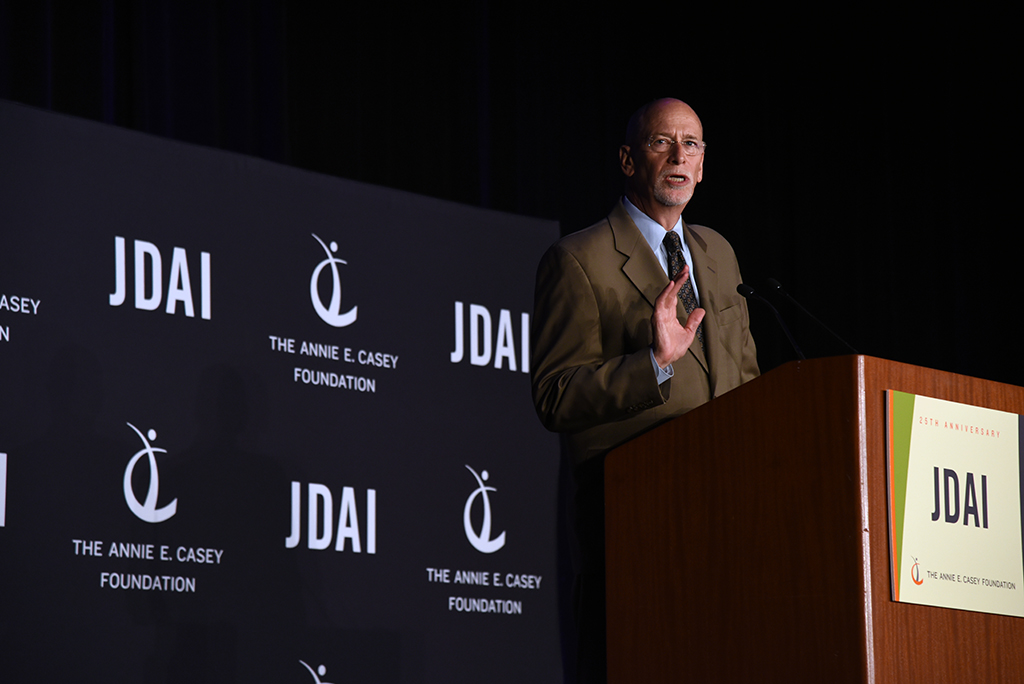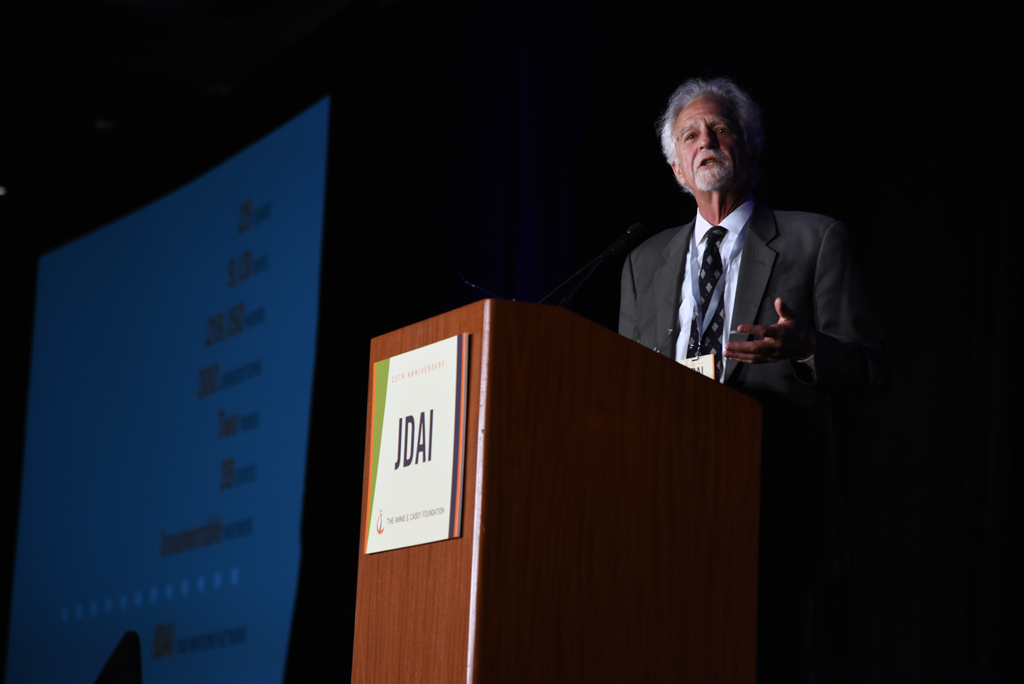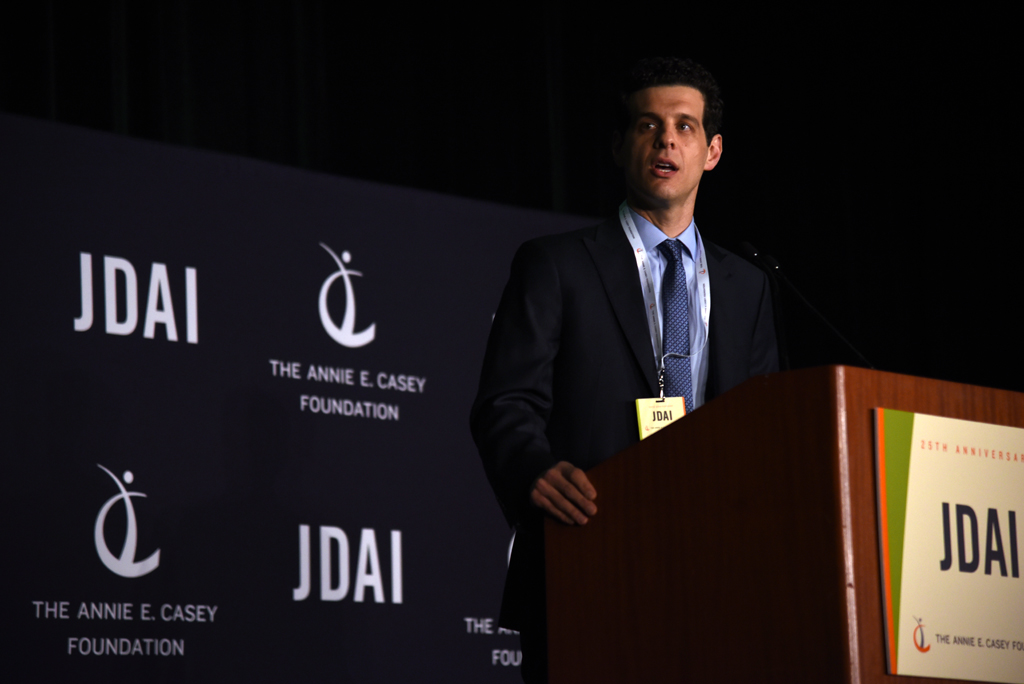ORLANDO, Florida — The director of the Annie E. Casey Foundation's* Juvenile Justice Strategy Group sounded an alarm Monday about a slowing of progress and an increase in the length of time youth are being incarcerated in some of the 300 sites of the Juvenile Detention Alternatives Initiative.
Nate Balis spoke at the 25th anniversary celebration of the Foundation-sponsored Initiative (JDAI), with some 900 registrants attending the three-day event. The JDAI has been instrumental in cutting the juvenile detention rate by 40 percent over the last two decades.
He noted in his prepared speech that much of the rapid growth in reducing youth incarceration happened between 2002 and 2012, but now progress is slowing. “I see this slowdown as a sign of JDAI reaching maturity, solidifying its transition from a renegade, against-the-grain reform idea to the standard for detention practice nationwide,” he said.
He also was concerned that the average duration of detention has increased in some sites by 40 percent or more. ”In those early days of JDAI, detention centers were often bursting at the seams, bunking three and four young people in cells designed to house one or two. So early JDAI stakeholders did everything they could to move young people out of detention quickly.

Patrick McCarthy, president of the Annie E. Casey Foundation
“These days, most detention facilities have empty beds, so the need to move kids out can feel less urgent. That’s understandable, but it’s not consistent with JDAI’s values.”
Balis also said, “We still don’t involve and support families like we could and should, or give young people a voice in shaping our policies and practices. And we don’t partner with community organizations as often as we could to connect young people with positive adults and with constructive activities in their home neighborhoods.
For more information about JUVENILE JUSTICE RESEARCH, go to JJIE Resource Hub | RESOURCE HUB
“Increasingly, reformers realize that the voices of people and communities affected by our systems, especially people and communities of color, are critical to defeating systemic racial and ethnic injustice.”
So too are relationships with the police. Balis said, “We know from experience that JDAI works much better when law enforcement is actively involved. But in many sites law enforcement leaders are not. That needs to change. ... Most importantly, law enforcement is the key player at the stage of the system where racial and ethnic disparities are by far the greatest. If we are ever going to make wholesale improvements in racial equity, law enforcement just has to be actively at the table.”

Bart Lubow, past director of the Annie E. Casey Foundation's Juvenile Justice Strategy Group
JDAI pioneer Bart Lubow had three lessons for the next generation of reformers. First, he called for a “laser-like focus on limiting incarceration and reducing punishment.” Second he listed racism’s effects on the outcomes of the juvenile justice system. “While it is great that there are half as many youth confined as was true only 20 years ago, none of us should ignore the fact that that number would be reduced again by half if only youth of color were treated like their white counterparts,” he said. Finally, system reform is complicated and challenged by a sense of urgency, but it takes time and steady progress to undo 100 years of wrong policy.
No one knows the future effects hardliners like President Donald Trump and U.S. Attorney General Jeff Sessions might have on youth justice. However, Patrick McCarthy, president of the Casey Foundation, wasn’t overly concerned, “The work that we do is primarily driven by states and counties and we have seen in states all over the country — red states, blue states, purple states across the ideological spectrum, the political divides — the one thing people agree on is that they want to see the juvenile justice system help get kids back on track. That’s what we focus on.“
*The Annie E. Casey Foundation helps fund the Juvenile Justice Information Exchange.
Hello. We have a small favor to ask. Advertising revenues across the media are falling fast. You can see why we need to ask for your help. Our independent journalism on the juvenile justice system takes a lot of time, money and hard work to produce. But we believe it’s crucial — and we think you agree.
If everyone who reads our reporting helps to pay for it, our future would be much more secure. Every bit helps.
Thanks for listening.

This report documents New Jersey s success in replicating the Juvenile Detention Alternatives Initiative model and highlights the importance of state leadership to progress.